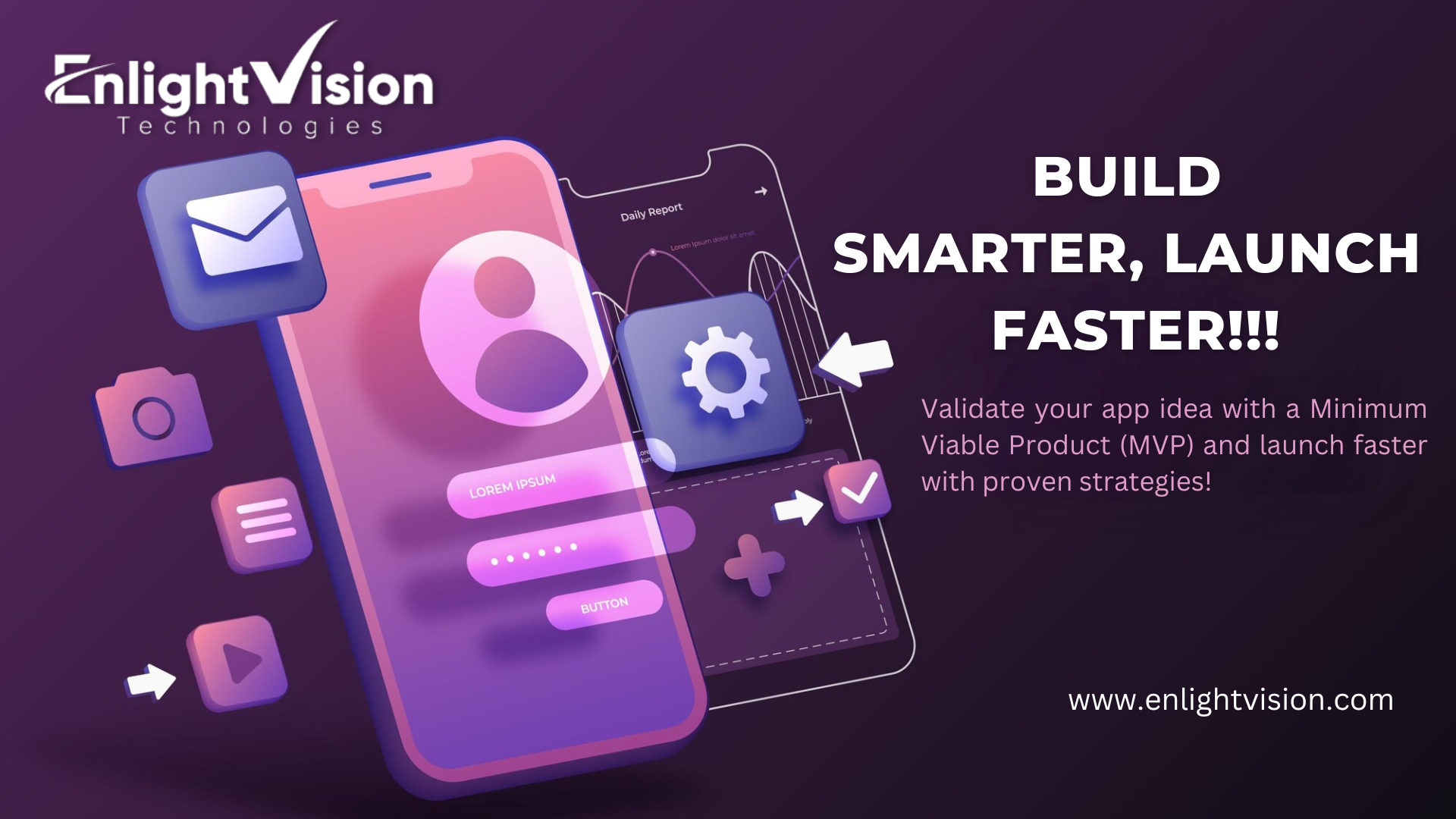How to Create an MVP for Your App Idea – A Step-by-Step Guide
Introduction:
Why You Need an MVP?
Launching an app without testing the market is a high-risk strategy. Many startups fail because they spend months (or years) building a feature-rich product that nobody wants. This is where a Minimum Viable Product (MVP) comes in—it helps you validate your idea, test user demand, and optimize your investment before a full-scale launch.
In this guide, we’ll cover:
✅ What is an MVP and why it’s important?
✅ Step-by-step process to build an MVP
✅ Real-world examples of successful MVPs
✅ Common mistakes to avoid
✅ Best practices for launching an MVP
🔗 Related Post: The Ultimate Guide to Mobile App Development
What is an MVP?
A Minimum Viable Product (MVP) is a basic version of your app that contains only core features to solve a problem for users. The goal is to test the idea with real users, collect feedback, and make data-driven improvements before investing in a full-scale product.
Benefits of an MVP:
✔ Validate your idea with minimal cost
✔ Attract early adopters and investors
✔ Avoid unnecessary development efforts
✔ Improve user experience through feedback
📌 Example:
🚀 Airbnb’s MVP (2007)
The founders, Brian Chesky and Joe Gebbia, couldn’t afford their rent in San Francisco, so they came up with a simple idea—rent out air mattresses in their apartment to travelers.
✅ They created a basic website (without an app).
✅ Manually uploaded listings for their apartment.
✅ Collected feedback from travelers.
💡 What they learned? Travelers were willing to pay for a budget-friendly alternative to hotels. This insight led to the multi-billion-dollar Airbnb we know today.
🔗 External Resource: Read Airbnb’s Founding Story
Step-by-Step Guide to Building an MVP
1. Identify the Core Problem & Define Your Value Proposition
Before building anything, ask:
- What problem does my app solve?
- Who is my target audience?
- How is my app different from competitors?
📌 Example:
🚖 Uber’s MVP (2009)
Uber started with a simple concept—connecting people with drivers via an app.
✅ The first version allowed users to book rides via text messages in San Francisco.
✅ No fancy UI/UX, ride scheduling, or multiple car options—just a basic working model.
✅ It proved demand for a ride-hailing service, leading to full-scale development.
2. Conduct Market Research & Competitor Analysis
Research helps you understand customer needs, competitors, and market demand. Use tools like:
🔍 Google Trends – Check search volume for your app idea.
📊 SEMrush & Ahrefs – Analyze competitor traffic and keyword rankings.
💬 Reddit & Quora – See what problems people discuss in your niche.
📌 Example:
📧 Dropbox’s MVP (2007)
Instead of building a fully functional product, Drew Houston (Dropbox’s founder) created a short explainer video demonstrating how cloud storage would work.
✅ Result? Thousands of people signed up for the waitlist, proving strong demand.
✅ Based on user feedback, Dropbox built the first functional version.
🔗 External Resource: Dropbox MVP Case Study
3. List Core Features & Prioritize Them
Your MVP should have only essential features that solve the main problem.
🔥 How to prioritize features?
- Must-Have: Core features solving the problem (e.g., user login, booking system).
- Nice-to-Have: Secondary features (e.g., AI recommendations, dark mode).
📌 Example:
📸 Instagram’s MVP (2010)
Before becoming the social media giant it is today, Instagram launched as a simple photo-sharing app with:
✅ Photo upload & sharing
✅ Basic filters
✅ Follow/followers system
🚀 What was missing? No stories, reels, IGTV, or DMs. The focus was clear—photo sharing.
4. Choose the Right Technology Stack
Choosing the right tech stack ensures your MVP is scalable, cost-effective, and easy to maintain.
🔹 For Web Apps:
- Front-End: React.js, Vue.js
- Back-End: Node.js, Django, Ruby on Rails
- Database: MongoDB, PostgreSQL, Firebase
🔹 For Mobile Apps:
- React Native, Flutter (Cross-platform)
- Swift, Kotlin (Native)
📌 Example:
📊 Zappos MVP (1999)
Instead of building an entire e-commerce platform, Zappos’ founder Nick Swinmurn tested demand by posting photos of shoes from local stores online.
✅ Customers ordered, and he manually bought & shipped the shoes.
✅ Once demand was validated, he built a full e-commerce platform.
🔗 External Resource: Zappos MVP Story
5. Develop, Test & Launch the MVP
🚀 Development Phases:
- Wireframing & UI Design – Use Figma, Adobe XD to create prototypes.
- MVP Development – Build the backend & core functionalities.
- User Testing & Soft Launch – Gather feedback, fix bugs, improve UX.
✅ Where to launch an MVP?
- Beta Testing Platforms: TestFlight (iOS), Google Play Beta
- Product Hunt & Indie Hackers: Find early adopters
- Soft Launch in a Small Market: Optimize before scaling globally
📌 Example:
🐦 Twitter’s MVP (2006) – “Twttr”
Originally, Twitter launched as an SMS-based microblogging service.
✅ Users could only post 140-character updates.
✅ No videos, hashtags, or trending topics—just text updates.
💡 Lesson? Start small, iterate fast.
Final Thoughts: Is an MVP Right for Your App Idea?
If you’re launching a new app, starting with an MVP is the smartest approach. It reduces risk, saves money, and helps validate your idea before full-scale development.
At EnlightVision Technologies, we specialize in MVP development using the latest technologies. Let’s turn your idea into a market-ready product!
📩 Contact us today for a free consultation. 🚀








